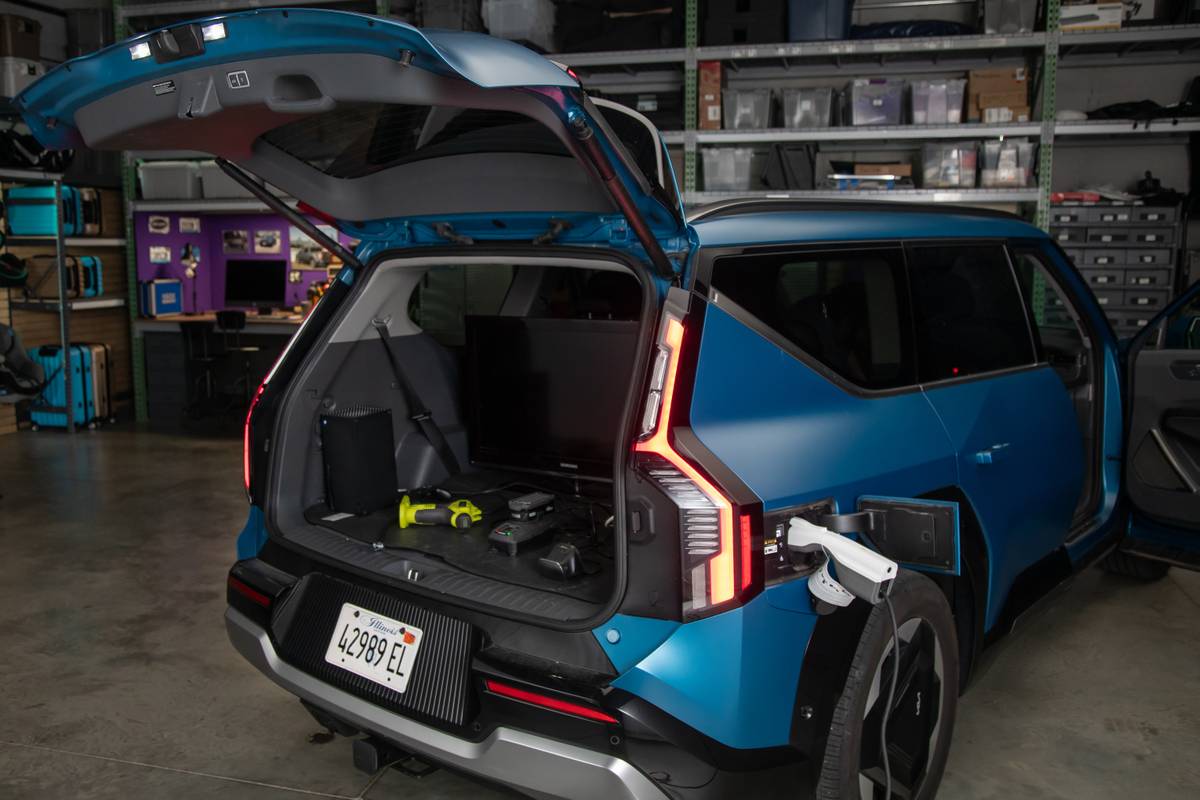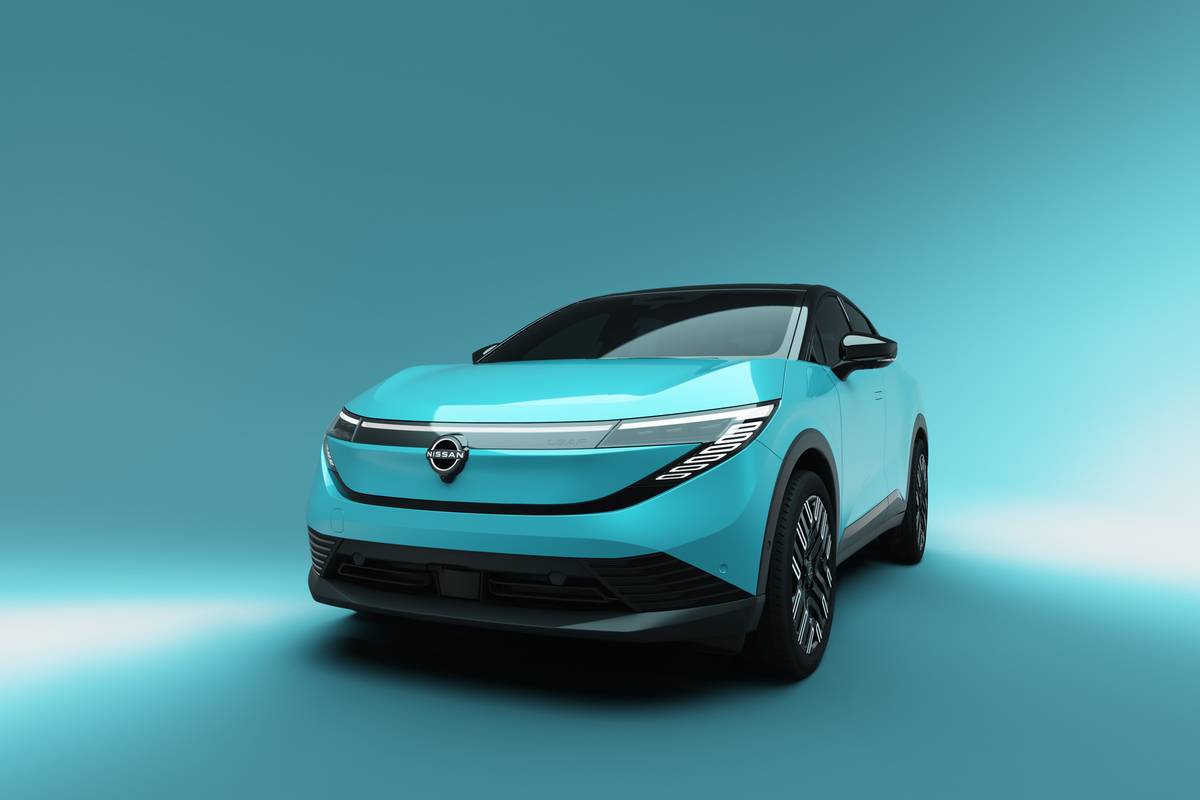chicagotribune.com's view
Chevy saved the best for last–the Corvette hardtop.
The ’99 hardtop is the newest addition to the sports-car family. It also is the first fixed-roof ‘Vette since the ’63-’67 Stingrays and expands the ‘Vette lineup to three distinct models–coupe (with removable roof panels), convertible and hardtop–for the first time.
Speculation was that the hardtop was going to be a “blue light” special, stripped nearly bare and offered at a bargain-basement price for those who always wanted a Corvette but couldn’t afford one. The hardtop was to be to the ‘Vette like the Porsche 924 was to the 911–for those who wanted to join the club but didn’t have the coins.
But demand for Corvette has been so strong since the redesigned coupe arrived for ’97 Chevy officials rethought the plan.
You bring out price leaders when your cars aren’t selling well and people refuse to part with $40,000, not when you are selling every one you can build and folks are waiting for the delivery trucks.
Enter the ’99 hardtop to join the coupe that bowed in ’97 and the convertible in ’98.
Not only have all three been redesigned, they also have been re-engineered to provide power plus room and comfort, character yet civility and refinement. And the hardtop is the creme de la creme of the trio; it’s for those to whom a car means more than the means of getting to and from work.
For decades, ‘Vettes were stunningly styled but rode like buckboards and beat you up. The allure of speed shifting wore thin when your butt began to blister and bruise. It became the occasional car.
Starting with the coupe in ’97, Corvette is now cozy, comfortable and quiet to offer pleasure rather than punishment.
But the hardtop isn’t for everybody. Chevy didn’t want it to be. This ‘Vette is for the sports-car aficionado, not for the person who simply wants to be seen in the $40,000 machine parked outside Blockbuster. The hardtop is a vehicle for the purist.
“The hardtop is for the performance-oriented market,” said Dick Almond, on hand to unveil the car for the media as Corvette brand manager before taking on a new assignment as director of dealer organization and planning for Chevy as a reward for a job well done.
“It’s a car for those who don’t want a lot of electronics, simply a car that will go fast,” Almond said.
Though not stripped, the hardtop comes only with specific equipment: a 5.7-liter, 345-horsepower V-8, 6-speed manual transmission and high-performance Z51 suspension package. No automatic, no soft, cushy “let’s hop in the ‘Vette and cruise to the club, dear” suspension.
But be advised that Chevy general manager John Middlebrook has promised a higher output V-8 that would bring back memories of the ZR-1, the King of the Hill ‘Vette that slapped you into your bucket seat as if propelled off the line via rocket. The King left sports-car novices reaching for the Depends at launch.
The road-hugging suspension, speed-s ensitive steering, active handling, traction control and anti-lock brakes give the hardtop such road-holding capabilities that this ‘Vette is far more suited to a higher-performance King of the Hill-like version than it was when the King was last sold in 1995.
Middlebrook said the high-output V-8 eventually slated for the ‘Vette hardtop would equal or exceed the 405 h.p. in the King.
“It’s not if, but when,” he said. “It won’t be in ’99, and it won’t be called King of the Hill, though it could have `Z’ in its name.”
The only drawback to a more potent V-8 is stricter federal emissions regulations that are supposed to take effect in the future that could find the ‘Vette sporting another catalytic converter rather than a higher-output engine.
After driving the hardtop at length here, on and off the track and on dry and wet pavement, it’s safe to say the 5.7-liter V-8 is no slouch and offers sufficie nt power for most enthusiasts.
It’s not just raw power that makes the hardt op so appealing. It’s also the standard traction control plus the optional active handling suspension borrowed from Cadillac that made it feel like the two seater is mounted on a rail when taking a joy ride through the Indiana countryside as well as when let loose on the track.
Hit the pedal and takeoff now. Turn the wheel and go where you point now. Upshift, downshift, kick one pedal, stand on the other. It’s like the hardtop is testing you, not the other way around.
The harder you play, the better the ‘Vette responds, especially on what Chevy folks call “twisties,” or roller-coaster roadways. The ‘Vette doesn’t wiggle or jiggle, shake or rattle, lean or sway. It sits flat so you do. When the run-flat 17-inch paws upfront and 18-inch radials in back grab onto the asphalt, they don’t want to let go. The hardtop is the stiffest, lightest and quickest of the ‘Vette trio.
It only comes with a 6-speed manual and only with the high-performance Z51 suspension package with stiffer springs and shocks and larger rolls bars. The 6-speed is surprisingly smooth. If you mistakenly bought a General Motors vehicle with one of those horribly stiff, balky, notchy Getrag 5-speeds in the ’80s, you should know GM has repented and come up with a manual that runs smoothly through all six gears.
Perhaps that’s one reason Chevy underestimated demand for 6-speeds in 1998 and ran short. Officials vow they’ve learned their lesson, and 6-speeds will be in adequate supply for 1999.
In addition to an adequate supply of 6-speed manuals, Chevy says it now has enough optional mag wheels and will make them available for the ’99 Corvettes for about $3,000.
Traction control and four-wheel ABS also are standard in the hardtop. Active handling is optional. No price yet, but it costs $500 on the ’98 coupe and convertible.
Active handling is a must for aggressive drivers and those who live in the Snow Belt and want to drive their ‘Vette year-round. It corrects for oversteer or understeer, situations that could lead to loss of control and skidding.
To best understand what it does, call it sideways stability control that ensures that the vehicle moves in the direction you intend.
Active handling works with ABS and traction control to apply the brakes at any of the four wheels when they part company with the pavement–wet or dry.
Sensors monitor yaw rate, steering angle, lateral acceleration and brake pressure to stabilize the vehicle when the rear end decides it wants to visit the same path the front end has been traveling.
For those who take part in sanctioned racing, the system can be put in a “competition mode” to temporarily disable traction assist.
In addition to limiting the hardtop to one engine/transmission/suspension combination, there are a few goodies you can’t get. These include dual zone driver/passenger air conditioning, luggage shade and parcel net (there’s no partition between the seats and trunk so you look into the trunk from the cabi n), memory mirrors/ seats, inflatable lumbar support and adjustable seat side wings (thank goodness Chevy opted against the inflatable granite seat), foglamps or heads-up display that flashes info onto the windshield.
Most sports-car purists won’t shed tears over the lack of these.
The only options are power driver’s seat, active handling, bodyside moldings and a Bose sound system upgrade.
Standard features include depowered air bags (no passenger-side cutoff switch), air conditioning, tilt/leather-wrapped steering wheel, speed control, AM-FM stereo with compact-disc player, rear window defogger, power door locks/windows/outside (heated) mirrors, leather bucket seats, tinted glass, daytime running lamps, remote keyless entry, and low-tire pressure warning system.
While no window sticker as yet, initial talk of $30,000 to $35 ,000 has turned to hints of “about $38,000,” versus $38,591 for the coupe and $44,999 for the convertible. Add $580 for freight.
Though only about $ 500 less than a coupe, remember the $800 6-speed is standard as is the $350 Z-51 suspension package.
The Corvette is now so refined, it’s no surprise Cadillac wants to borrow the platform for a roadster in 2002, a two-seater about 5 inches shorter than the ‘Vette. Sources say the chief concern is that the Cadillac roadster not look or act like a ‘Vette. Reports are the differences are considerable.
The Cadillac will be a lap-of-luxury cruiser, if approved, and the ‘Vette will be the fire-breather.
>> 1999 Chevrolet Corvette hardtop
© 1998 Chicago Tribune Wheelbase: 104.5 inches Length: 179.7 inches Engine: 5.7-liter, 345-h.p. V-8 Transmission: 6-speed manual Fuel economy: 18 m.p.g. city/28 m.p.g. highway Base price: Not available. Due out in fall, or whenever UAW and GM get over their hissy fit. Guestimate: About $38,000. Price as tested: Not available, but if you don’t have $40,000 to spend when all the goodies are added, you probably should stick with a Camaro. Pluses: Car of the Year and you pick the year. Best engine, transmission, brakes, suspension package yet from Chevrolet if not the industry. And comfy, roomy and quiet. Not a stripped ‘Vette as originally planned, but a high-power performer that holds the road as if mounted on a rail. Makes it a no-brainer that Cadillac would want a roadster off this platform. Minuses: No automatic, which will keep some of the wannabes out of the market. >>
Latest news



